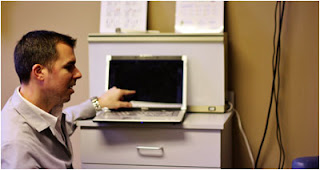- You have sudden, severe foot pain
- Your foot pain began following an injury, especially if your foot is bleeding or bruising, or you cannot put weight on it
- You have redness or swelling of the joint, an open sore or ulcer on your foot, or a fever
- You have pain in your foot and have diabetes or a disease that affects blood flow
- Your foot does not feel better after using at-home treatments for 1-2 weeks
- You have persistent pain in your feet or ankles
- You have noticeable change to your nails or skin
- Your feet are severely cracking, scaling, or peeling
- There are blisters on your feet
- There are signs of bacterial infection, including: Increased pain, swelling, redness, tenderness, or heat. Red streaks extending from the affected area. Discharge of pus
- Spreading of the infection to other areas, such as the nail bed, or skin under the nail, the nail itself, or the surrounding skin
- Your toenail is getting thicker and causing you discomfort
- You have heel pain accompanied by a fever, redness (sometimes warmth) or numbness or tingling in your heel, or persistent pain without putting any weight or pressure on your heel, or the pain is not alleviated by ice, aspirin, (or ibuprofen or acetaminophen)
- You have diabetes or certain diseases associated with poor circulation and you develop athlete's foot. People with diabetes are at increased risk for a severe bacterial infection of the foot and leg if they have athlete's foot
Welcome to my podiatry practice's blog! We are located in Homer Glen, Illinois. We provide comprehensive foot care and surgery for patients in Chicago and the southwest suburbs - Homer Glen, New Lenox, Tinley Park, Lockport, Frankfort, Mokena, Lemont and the surrounding area. I am a podiatric physician and surgeon specializing in traditional and surgical management of lower extremity conditions and deformities.
Sunday, January 27, 2013
When To Call A Podiatrist
Subscribe to:
Post Comments (Atom)

No comments:
Post a Comment